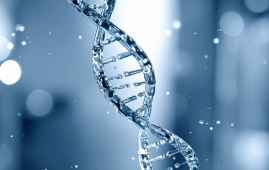

In drug research, artificial intelligence is becoming increasingly crucial. Researchers at the University of Zurich (UZH) have been able to better comprehend a deadly metabolic disorder; Lysosomal Storage Disease, because to advances in the use of Big Data, learning algorithms, and powerful computers.
Cystinosis is a rare lysosomal storage disease that affects 1 in 100,000 to 200,000 babies globally. The most prevalent and severe form of cystinosis, nephropathic (non-inflammatory), appears with kidney disease symptoms within the first months of birth, typically leading to kidney failure by the age of ten.
“Children with cystinosis suffer from a devastating, multisystemic disease, and there are currently no available curative treatments,” says Olivier Devuyst, head of the Mechanisms of Inherited Kidney Disorders (MIKADO) group and co-director of the ITINERARE University Research Priority Program at UZH.
The UZH researchers collaborated with Insilico Medicine, a startup that employs AI for drug development, to identify the underlying cellular mechanism behind cystinosis kidney disease. They identified disease-causing pathways and prioritized treatment targets within cystinosis cells utilizing model systems and Insilico’s PandaOmics platform.
Their findings revealed a causal association between the regulation of a protein called mTORC1 and the disease. Alessandro Luciani, one of the research group leaders, explains, “Our research showed that cystine storage stimulates the activation of the mTORC1 protein, leading to the impairment of kidney tubular cell differentiation and function.”
A promising therapy medication has been identified
Because cystinosis patients frequently require a kidney donation to regain kidney function, there is an urgent need for new effective treatments. Using the PandaOmics platform, the UZH research team set out to find current medications that could be repurposed for cystinosis. This entailed examining the drug’s structure, target enzymes, probable side effects, and efficacy in the affected tissues. Rapamycin, an already-approved medicine, has been found as a good possibility for treating cystinosis.
Rapamycin therapy restored lysosome functioning and regained cellular processes, according to studies in cell systems and model species.
Olivier Devuyst and Alessandro Luciani are optimistic about future developments: “Although the therapeutic benefits of this approach will require further clinical investigations, we believe that these results, obtained through unique interdisciplinary collaboration, bring us closer to a feasible therapy for cystinosis patients.”
more recommended stories
 Gut Immune Cells and Long-Lasting Antiviral Protection.
Gut Immune Cells and Long-Lasting Antiviral Protection.Breakthrough Findings on How Gut Immune.
 Mild Pancreatic Duct Dilatation Signals Higher Cancer Risk
Mild Pancreatic Duct Dilatation Signals Higher Cancer RiskEarly Structural Changes Offer Critical Clues.
 How the Uterus Senses Force During Labor: New Insights
How the Uterus Senses Force During Labor: New InsightsA new study published in Science.
 Fat-Free Mass and Brain Outcomes in Preterm Babies
Fat-Free Mass and Brain Outcomes in Preterm BabiesEarly Fat-Free Mass May Hold the.
 How Hormones Shape Dopamine-Driven Learning
How Hormones Shape Dopamine-Driven LearningNYU Study on Hormones and Cognitive.
 Protein Pair Guides Chromosome Alignment in Mitosis
Protein Pair Guides Chromosome Alignment in MitosisKey Points A joint research team.
 Intensive mind-body retreat rapidly alters brain function
Intensive mind-body retreat rapidly alters brain functionAn intensive mind-body retreat combining meditation,.
 Citrus and Grape Compounds Help Prevent Type 2 Diabetes
Citrus and Grape Compounds Help Prevent Type 2 DiabetesA new clinical trial highlights the.
 Personalized Pain Care Transforms Parkinson’s Treatment
Personalized Pain Care Transforms Parkinson’s TreatmentNew UniSA research underscores the urgent.
 Genetic Diversity Explains Obesity Risk Differences
Genetic Diversity Explains Obesity Risk DifferencesCross-ancestry Study Identifies Novel Obesity Genes.

Leave a Comment